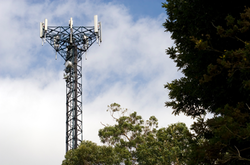 Cell-phone towers are becoming as ubiquitous as trees. Over 100,000 towers are listed in a federal database, with some 22,000 new towers having been erected in just the past five years. Without proper bird deterrents, the towers can be dangerous to birds. According to the U.S. Fish and Wildlife Service, between 5 million and 50 million birds die each year when they slam into towers that are used to power cellular telephones, pagers, televisions and radios, Migrating birds crash into these towers because they are lighted at nigh and attract birds. Bird deterrents can prevent these mishaps. According to environmentalists, birds killed or injured include such endangered migratory songbirds as the black rail, Bell's vireo, the golden-winged warbler and Henslow's sparrow. Most songbirds fly at night and orient themselves via starlight. In bad weather, birds often mistake tower lights for stars. The birds keep circling until they collide with the tower, support wires, or each other. The problem is that birds are sensitive to magnetic radiation to the point where microwaves interfere with their sensors and misguide them while navigating. Environmentalists have urged cell phone companies to install bird deterrents to save the birds.
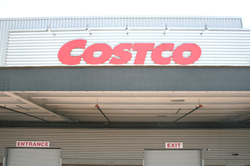 If you run a grocery store, you know about health inspectors and health codes. You also know that the last thing you need in this fragile economy is a health code violation. Most cities in the U.S. have two types of violations: critical and non-critical. Pest birds can cause a critical violation. If you want to continue to do business, you must find a way to get rid of birds that may be loitering around your store. According to the U.S. Department of Agriculture, critical violations could cause a food-borne illness to infect a person. Most government inspection programs are based primarily on food safety, instead of food quality. Stores are categorized based on the food safety risk posed by any activity conducted in the store. If a store is handling easily spoiled or food subject to infection, such as raw meat or deli service, it is considered a high-risk store and inspections are conducted more frequently. Moderate risk stores include convenience stores that heat cooked foods like hot dogs or pizza. Low risk stores usually carry only pre-packaged, non-potentially hazardous foods. There are many ways to get rid of birds, which when spotted by health inspectors, may cause you to incur a health code violation.
 by Bryan Donoho For many people, their home is their greatest asset. It provides shelter, equity, and sense of accomplishment so it is without surprise that most people will do whatever it takes to protect the value and aesthetic properties of their home. Unfortunately, humans are not the only creatures who seek refuge in a house. Pest birds such as pigeons and sparrows find most any house to be a suitable nesting location. Once a bird begins construction on a nest, it is next to impossible to get rid of them. The solution: Solve the problem before it begins. Factors such as disease and property damage further encourage homeowners to get rid of birds to avoid any potential problems. Birds are very simple creatures but can present some complex problems when nesting on a home. They will seek out any nook or crevice that will provide sufficient shelter. They prefer to be near a food source, so it is always good to check and see if there is any available food. If there is one, get rid of it. This includes bird feeders, trash, pet food, etc. Once birds have established a viable food source, there are very few things that will deter them. After eliminating any potential food sources, getting rid of birds will be much easier. When attempting to get rid of birds on a home there are three basic kinds of deterrents. These include physical, visual, and sound deterrents. Each different type of deterrent has its place in keeping a home "bird free". By examining these three types of deterrents, one will have a better understanding of how to get rid of birds on a home and hopefully avoid any potential problems.
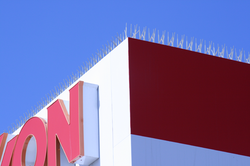 Pest birds pose all kinds of problems for commercial property owners. They create a distraction for employees. They make noise that can turn off customers and annoy workers. And they can contaminate your property with disease-carrying droppings. The bird invasion begins innocuously enough. One bird will act as a scout and check out the area for predators and other dangers, another may be in charge of finding food, and perhaps a third will evaluate the area for nesting possibilities. These early scouts often relay the good news to their flock, and pretty soon you've got a small-scale invasion of flying pests. To get rid of birds, you've got to swing into action early with effective bird control measures. As a commercial property owner, you have to be pro-active in your mission to get rid of birds. If your establishment has anything to do with food processing or packaging, you can't bury your head in the sand and pretend the birds don't exist. Ignore them and you'll have to deal with health inspectors. Let birds go unchallenged and they will damage your sliding windows and doors, seize up skylights and turbine roof vents, and damage those expensive AC units you paid so dearly for. Bird nests can also create a fire hazard as most of them are built from excellent dry fire kindling.
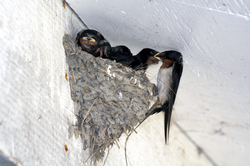 And What You Can Do to Deter Themby Alex A. Kecskes Swallows are sleek, slender birds typically found in North America. They are very territorial, returning to the same nesting site in the spring and summer. Once confined to cliffs, swallows have become a growing nuisance in suburban areas. Instead of attaching their nests to cliffs, many prefer man-made sites like the wood beams and stucco of modern houses. They often build their characteristic mud nests in the outer walls and eaves of homes. (One home was "decorated" with at least 32 swallow abodes constructed of hardened mud.) Left on your home long enough, swallow nests will leave an unsightly stain. A colony of birds will also leave a trail of droppings down the sides of your home and the ground below. Property owners spend time and money cleaning up the mess and concern over the slip-and-fall hazards from swallow droppings. The bacteria, fungal agents and parasites found in swallow droppings and nests can carry hosts with serious diseases, including histoplasmosis, encephalitis, salmonella, meningitis, toxoplasmosis and more. Worse yet, swallow mud nests are often infested with insects. The insects tend to move into your home to find new hosts. Even when swallows leave, their vacant nests simply attract new birds. Homeowners should be rightly concerned about swallows nesting on their homes, but there are limitations to what one can do. You see, swallows and their nests are fully protected under the Migratory Bird Treaty Act of 1918, which makes it illegal to intentionally kill, injure or take any migratory bird. It is also illegal to intentionally damage or destroy the nest, eggs, or young of a swallow while it is being built or in use. The Act allows fines or prison sentences for every bird, egg or nest destroyed. Fortunately, there are some swallow deterrents one can use that are both effective and humane.
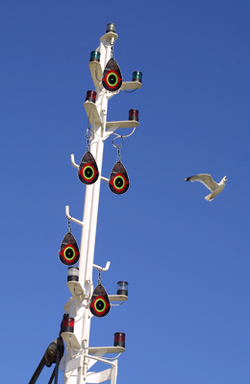 Many sailors have a real love affair with their boats. They may not have a fancy yacht, a 50-foot trawler or some go-fast "cigarette," but they're always sanding, painting or cleaning their boat every chance they get. A clean, ship-shape boat says a lot about its owner. And most owners say a lot about their boat—to friends, family, fellow sailors, even strangers. One thing they all have in common is their disdain for pest birds. Which brings us to a major problem faced by virtually every boat owner. Problem: Pest birds come in all sizes and shapes--gulls, cormorants, pelicans and pigeons. They love to flock around your masts, spreaders and riggings. And what they leave behind isn't pretty: bird droppings that smell and deface and eat into everything: canvas covers, rigging, sails, radar antenna gear, just about every surface on your boat. Brazen gulls will fearlessly squat on your boat, leaving you to contend with corrosive droppings, dead fish parts and nesting materials. Not exactly the image you want for your next party or outing with friend and family. These droppings can also carry any number of diseases. And they're hard to remove, usually requiring sanding. They can even cause people to slip and fall on deck—especially children.
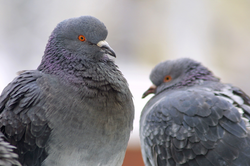 Launceston is a city just north of the state of Tasmania, Australia, at the juncture of the North Esk, South Esk, and Tamar rivers. It is the second largest city in Tasmania with a population of over 100,000 people. The city recently sought advice on how to get rid of pigeons. A recent pigeon plague across inner Launceston rooftops created a smelly mess, cost local businesses thousands and threatened to potentially spread serious diseases. The pigeons made their nests in some of the city's landmark buildings, including the old gasworks, the Telstra tower, and several of the city's historic banks and government institutions. Some referred to the putrid pigeon infestation as a major nuisance and potentially toxic. The problem got so bad that one office was forced to close while hundreds of pigeons and their chicks were destroyed as the building's roof cavity was cleared and cleaned. Clearly, something had to be done to get rid of the pigeons. Business owners noted that the pigeon problem was worse than dealing with rats. People were warned not to feed the pigeons to reduce the amount of droppings, which not only carry disease like salmonellosis, aspergillosis and histoplasmosis, but can create dangerous slip-and-fall liability for a business.
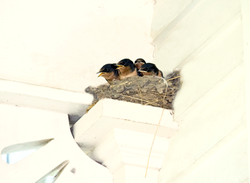 Spring is just around the corner and so is the arrival of Swallows. They'll be looking your home over for nesting and roosting spots. Yes, they're beautiful birds, but what they can do to your home and yard is not so pretty. They'll be building their mud nests on your garage, gazebo, patio and home. In fact, the eave of your home offers the perfect nest-building spot for swallows. It protects them from predators and it offers shelter from the elements. So unless you've prepared your property properly with the right bird deterrents, you'll be plagued with swallow nests, the mess and debris. Swallows prefer to nest in colonies, causing major headaches and thousands of dollars in damage for homeowners. And it's not just the nests; swallow droppings are unsightly and hazardous, carrying diseases that can be transmitted to humans. When swallow nests eventually fall to the ground, the bugs, fleas, ticks and mites harboring inside can spread to dogs, cats and children who may pick them up.
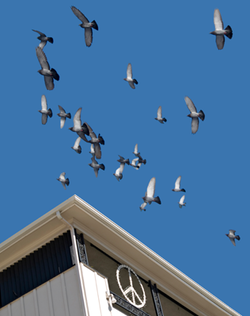 by Alex A. Kecskes Not long ago, feeding pigeons in Trafalgar Square became an offense with violators being fined. In one city, pest birds had learned to associate a school's lunch bell with feeding time and would aggressively pester children for food. The fact is, " get rid of pigeons" has become the battle cry in many cities, towns and parks throughout the world. Especially as city health officials become increasingly aware of the many diseases carried by pigeon droppings. The truth is, pigeons can create a number of serious problems. Gathering in flocks on buildings, pigeons can constitute a threat to human health and safety. The mess and droppings left by pigeons can negatively impact the appearance of a business. Often, the sheer weight of bird droppings can lead to structural collapse, particularly ceilings. It can also have a negative impact on a business's workforce. This includes the slip-and-trip hazards bird droppings leave on walkways, steps and entrances. It's no wonder more property owners seek ways to get rid of pigeons. Clean-up costs can be prohibitively expensive. Removing nesting materials and accumulated droppings can be difficult, sometimes requiring specialists in "moon suits" to protect them from disease-carrying droppings that are aerated during removal by sand blasters. Through bird egg removal, birth-control pills and food deprivation, problem pigeons can be driven out of most areas in three to five years. While these methods may be humane, they are too time-consuming to appeal to most property owners and municipalities. Fortunately, there are far more efficient and expedient ways to get rid of pigeons.
|









 RSS Feed
RSS Feed